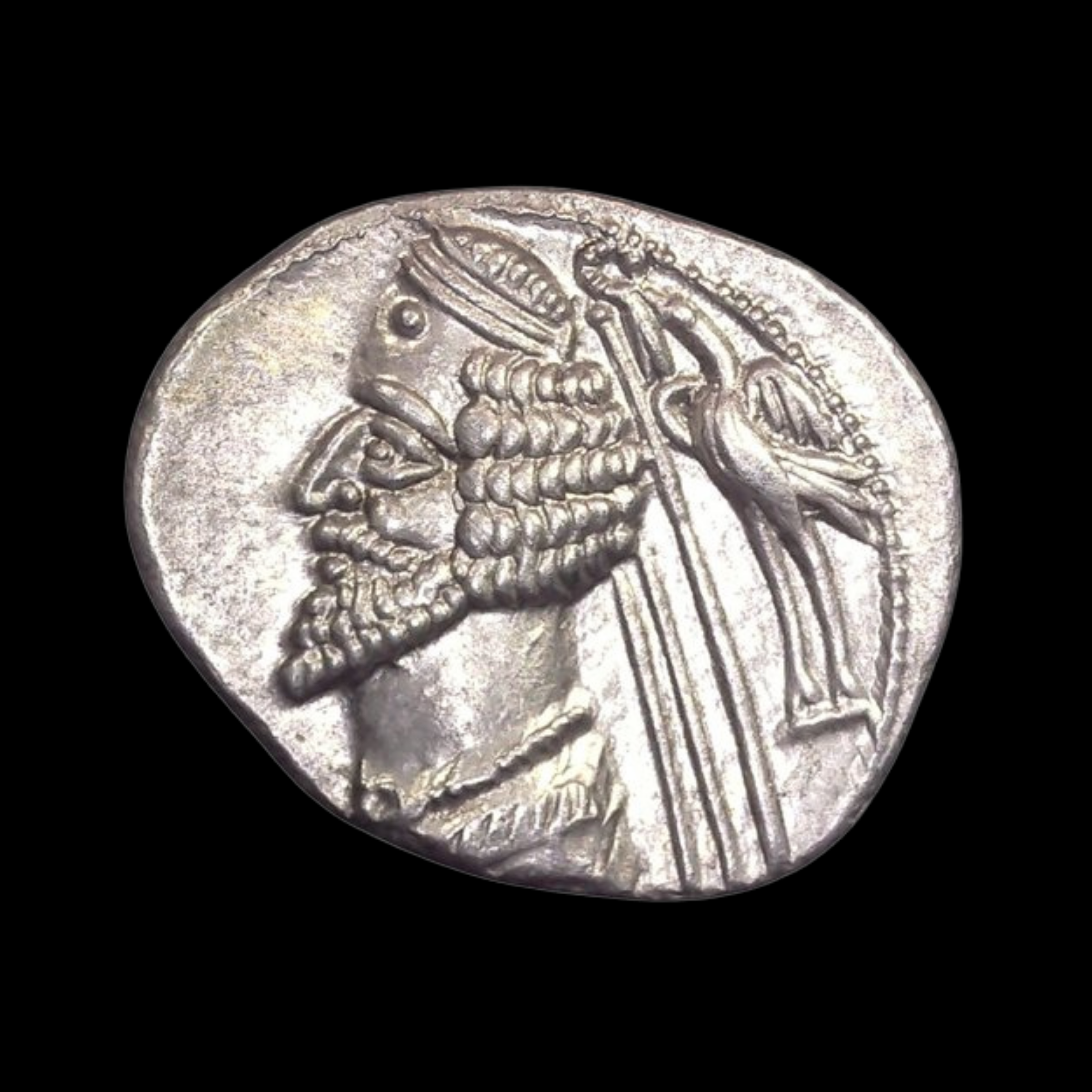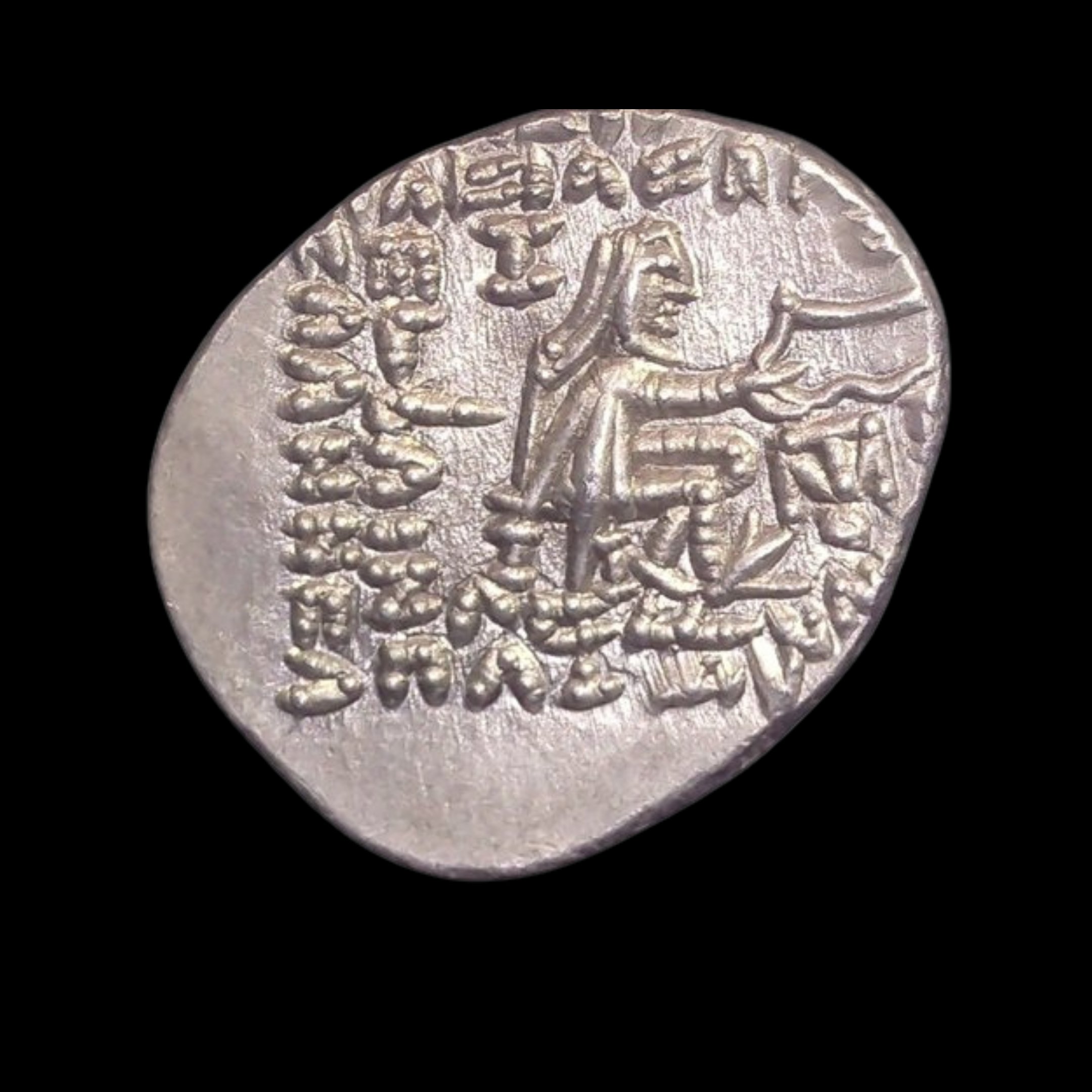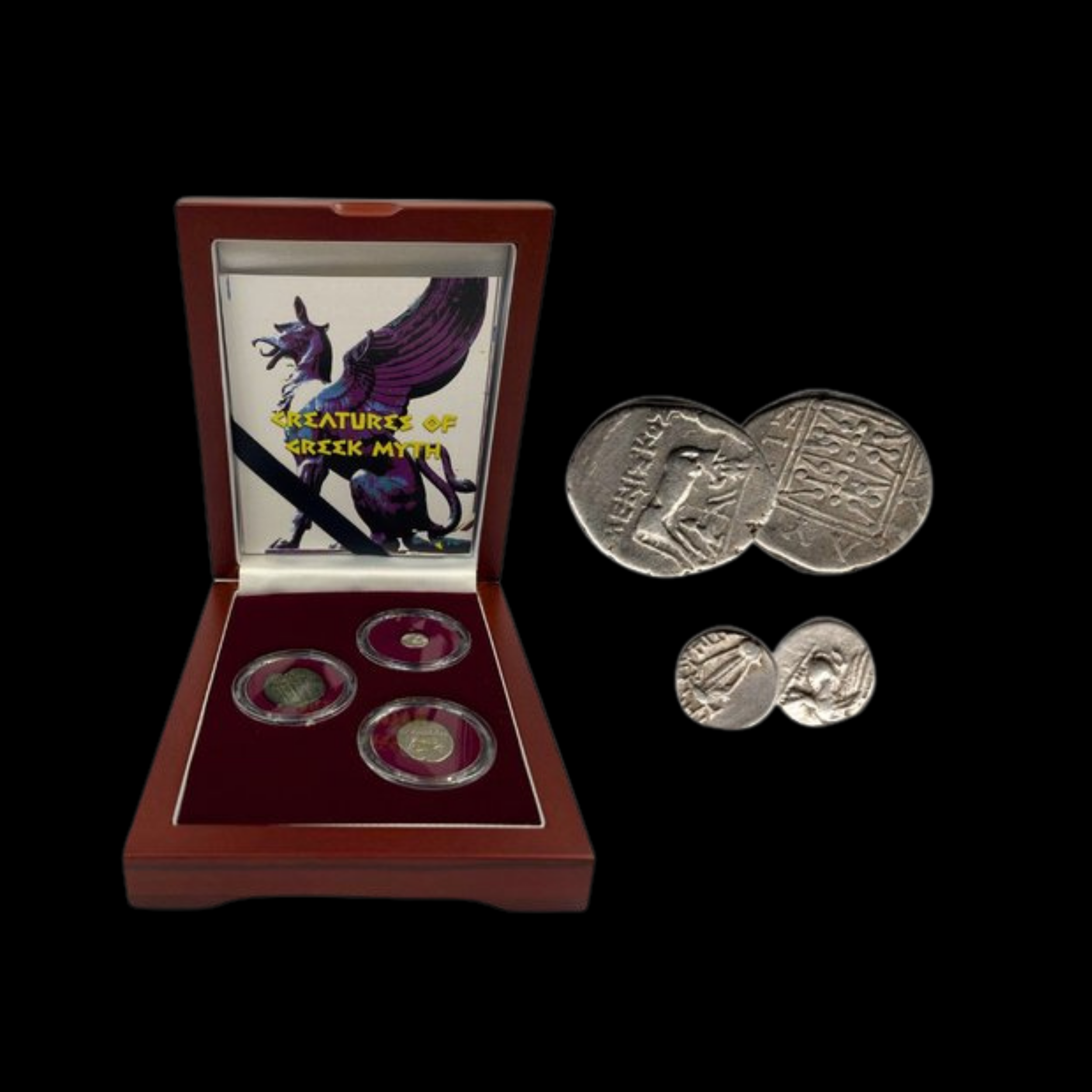 Image 1 of 4
Image 1 of 4

 Image 2 of 4
Image 2 of 4

 Image 3 of 4
Image 3 of 4

 Image 4 of 4
Image 4 of 4





Electrum Third-Stater from Uncertain Ionian Mint (about 2,600 years ago)
This coin is an electrum third-stater from an uncertain mint in Ionia (western coast of modern Turkey) dating to approximately 600-550 BCE. This represents one of the earliest forms of coinage in human history, as the concept of struck coins first developed in this region of Asia Minor during the 7th century BCE. Made from electrum, a natural alloy of gold and silver, this coin exemplifies the dawn of Western monetary systems.
Coin Description:
Front side: The obverse depicts a lion or seal head facing left, rendered in the stylized archaic Greek artistic tradition of the period.
Back side: The reverse features two incuse punches, a characteristic of early coinage before double-sided designs became standard.
Technical Details:
Electrum composition (EL, a natural gold-silver alloy)
Third-Stater denomination (one-third of a full stater, the standard unit)
Weight: Approximately 4.7 grams (typical for Ionian third-staters)
Size: Approximately 12-13mm in diameter
Grade: Ch XF (Choice Extremely Fine) - indicating excellent preservation with minor wear
Strike Quality: 3/5 (average strike with moderate detail)
Surface Quality: 4/5 (excellent surface preservation with minimal issues)
Date of minting: Circa 600-550 BCE (Archaic Greek period)
Historical Significance: This coin represents one of the world's earliest forms of standardized currency, minted during a pivotal period when Ionian Greek cities were politically independent but increasingly threatened by Lydian and later Persian expansion. The innovation of coinage is traditionally attributed to the Lydians, but quickly spread to neighboring Greek cities in Ionia. These early coins transformed economic exchange by providing a portable, divisible store of value guaranteed by the issuing authority. The lion imagery may connect to Lydian influences or local city symbolism, while the simple punch marks on the reverse reflect the primitive minting technology of this pioneering period in monetary history.
This coin is an electrum third-stater from an uncertain mint in Ionia (western coast of modern Turkey) dating to approximately 600-550 BCE. This represents one of the earliest forms of coinage in human history, as the concept of struck coins first developed in this region of Asia Minor during the 7th century BCE. Made from electrum, a natural alloy of gold and silver, this coin exemplifies the dawn of Western monetary systems.
Coin Description:
Front side: The obverse depicts a lion or seal head facing left, rendered in the stylized archaic Greek artistic tradition of the period.
Back side: The reverse features two incuse punches, a characteristic of early coinage before double-sided designs became standard.
Technical Details:
Electrum composition (EL, a natural gold-silver alloy)
Third-Stater denomination (one-third of a full stater, the standard unit)
Weight: Approximately 4.7 grams (typical for Ionian third-staters)
Size: Approximately 12-13mm in diameter
Grade: Ch XF (Choice Extremely Fine) - indicating excellent preservation with minor wear
Strike Quality: 3/5 (average strike with moderate detail)
Surface Quality: 4/5 (excellent surface preservation with minimal issues)
Date of minting: Circa 600-550 BCE (Archaic Greek period)
Historical Significance: This coin represents one of the world's earliest forms of standardized currency, minted during a pivotal period when Ionian Greek cities were politically independent but increasingly threatened by Lydian and later Persian expansion. The innovation of coinage is traditionally attributed to the Lydians, but quickly spread to neighboring Greek cities in Ionia. These early coins transformed economic exchange by providing a portable, divisible store of value guaranteed by the issuing authority. The lion imagery may connect to Lydian influences or local city symbolism, while the simple punch marks on the reverse reflect the primitive minting technology of this pioneering period in monetary history.
This coin is an electrum third-stater from an uncertain mint in Ionia (western coast of modern Turkey) dating to approximately 600-550 BCE. This represents one of the earliest forms of coinage in human history, as the concept of struck coins first developed in this region of Asia Minor during the 7th century BCE. Made from electrum, a natural alloy of gold and silver, this coin exemplifies the dawn of Western monetary systems.
Coin Description:
Front side: The obverse depicts a lion or seal head facing left, rendered in the stylized archaic Greek artistic tradition of the period.
Back side: The reverse features two incuse punches, a characteristic of early coinage before double-sided designs became standard.
Technical Details:
Electrum composition (EL, a natural gold-silver alloy)
Third-Stater denomination (one-third of a full stater, the standard unit)
Weight: Approximately 4.7 grams (typical for Ionian third-staters)
Size: Approximately 12-13mm in diameter
Grade: Ch XF (Choice Extremely Fine) - indicating excellent preservation with minor wear
Strike Quality: 3/5 (average strike with moderate detail)
Surface Quality: 4/5 (excellent surface preservation with minimal issues)
Date of minting: Circa 600-550 BCE (Archaic Greek period)
Historical Significance: This coin represents one of the world's earliest forms of standardized currency, minted during a pivotal period when Ionian Greek cities were politically independent but increasingly threatened by Lydian and later Persian expansion. The innovation of coinage is traditionally attributed to the Lydians, but quickly spread to neighboring Greek cities in Ionia. These early coins transformed economic exchange by providing a portable, divisible store of value guaranteed by the issuing authority. The lion imagery may connect to Lydian influences or local city symbolism, while the simple punch marks on the reverse reflect the primitive minting technology of this pioneering period in monetary history.
Ionia (/aɪˈoʊniə/ eye-OH-nee-ə)[1] was an ancient region encompassing the central part of the western coast of Anatolia. It consisted of the northernmost territories of the Ionian League of Greek settlements.[citation needed] Never a unified state, it was named after the Ionians who had settled in the region before the archaic period.[citation needed]
Ionia proper comprised a narrow coastal strip from Phocaea in the north near the mouth of the river Hermus (now the Gediz), to Miletus in the south near the mouth of the river Maeander, and included the islands of Chios and Samos. It was bounded by Aeolia to the north, Lydia to the east and Caria to the south. The cities within the region figured significantly in the strife between the Persian Empire and the Greeks.










